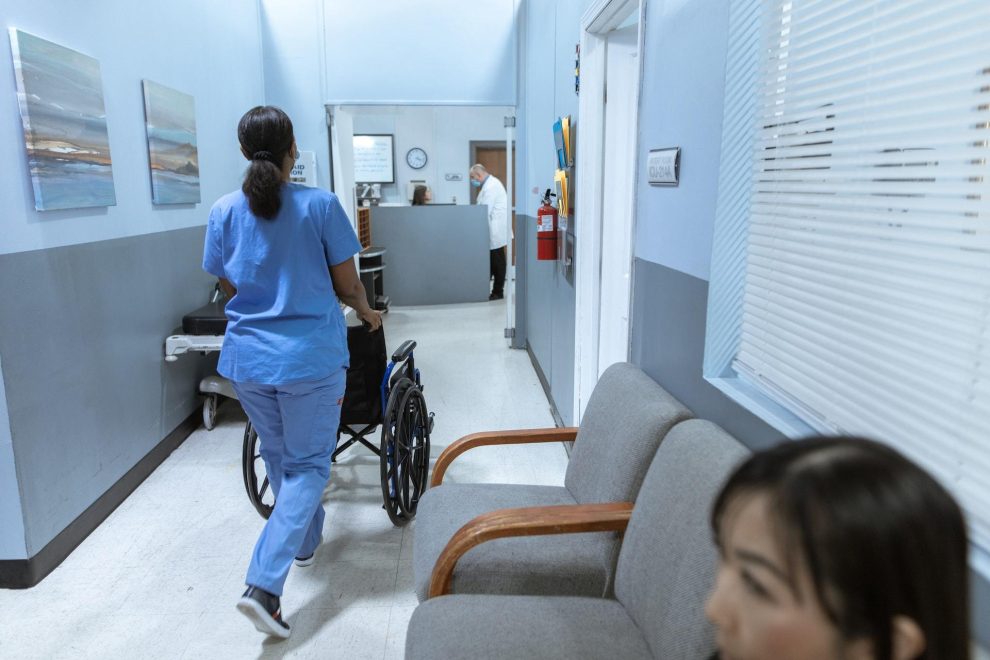NEARLY one in six people in Wales is on a waiting list for NHS treatment, according to new figures.
The Welsh Government, which runs the health service, said figures for October showed there were around 596,000 individual patients on waiting lists, the highest figure on record.
Health minister Eluned Morgan said it was “disappointing” to see the rise and, noting “significant” demand on emergency services, paid tribute to “heroic” NHS staff.
The latest figures also show the health service missed targets for ambulance response times and A&E waits in November.
The Welsh Conservatives have accused the government of “not delivering results”, while Plaid Cymru called for a “clear strategy” to improve performance.
But Darren Hughes, the director of the Welsh NHS Confederation – representing the nation’s health boards, urged politicians “in Cardiff and Westminster to stop playing the political blame game”.
“Demand is at historically high levels across the UK, in a very challenging financial situation,” he said. “Staff are working tirelessly to give people the best care.
“The challenges in social care are still having a disproportionate impact on our ability to discharge patients and ensure patients get the care required in a safe and timely manner.”
Waiting lists
NHS treatment waiting lists grew in October for the eighth consecutive month, and there are now nearly 764,500 patient pathways yet to be opened.
Among those pathways were about 134,500 people waiting for more than one year for treatment.
Aneurin Bevan University Health Board (ABUHB), covering Gwent, recorded the shortest overall waiting lists for treatment (nearly 23,000 pathways).
Ambulance response times
The Welsh Government target is for paramedics to arrive at the scene within eight minutes for at least 65% of red calls, but this goal has proved out of reach, nationally, for more than two years.
Paramedics in Wales are managed and directed by the nationwide Welsh Ambulance Service Trust, rather than individual health boards.
But crews in Gwent recorded the best performance when it came to responding to the most serious emergencies – so-called “red calls”.
Across Wales, crews made it to the scene within eight minutes for 49.5% of red calls in November, and for emergencies in Gwent the figure was 53.8%.
The Welsh Government acknowledged performance was below the target but said there had been a “significant increase” in red calls in recent years.
Ambulance delays are compounded by handover problems at hospitals, when paramedics are “unable to respond to new calls while waiting to handover patients to emergency departments”, the government added.
A&E waits
More than 14,000 people visited an emergency department in Gwent last year, of whom around half attended the Grange.
The government target is for 95% of new patients to spend less than four hours in an emergency department before they are admitted, transferred or discharged.
But across Wales the figure was well below that target, and just 69.5% of patients were seen within the four-hour window.
ABUHB recorded the third-best performance, at 75%.
Every patient should wait less than 12 hours to be seen, according to the Welsh Government’s target – but this, too, was missed in both Gwent and Wales.
Nationally, 89.9% of patients were seen within 12 hours, while in the ABUHB area the figure was 91.7% – the fourth best in Wales.
What did the health board say?
A spokesman for Aneurin Bevan University Health Board said: “We recognise that every one of our patients is an individual whose life is being affected by having to wait to access NHS services, and so we have a range of actions in place to reduce our waiting times and to prioritise the most clinically urgent cases.
“As a health board we have made good progress this year in reducing the number of long waiting patients and we continue working hard to reduce this further.
“It’s important to note that these backlogs are not unique to any one health board. We are currently experiencing these issues right across NHS Wales and in other parts of the UK.”




















